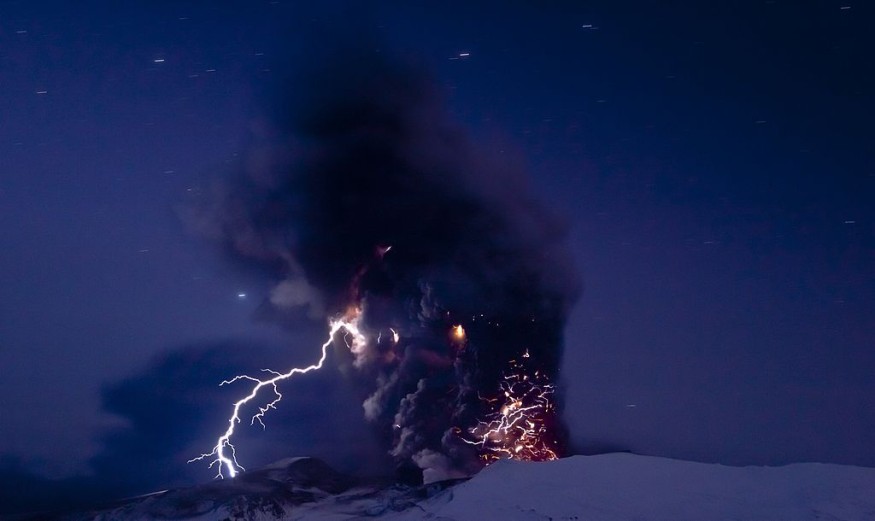What you might not know about active volcanoes is that they produce invisible flashes of electricity cannot be seen by the naked eye.
These invisible bursts called the vent discharges are powered by smaller, more mysterious bursts of electrical activity around the vents of a volcano which happens to detect early signs of an explosive eruption.

To understand the intriguing surges of lightning produced by a volcano, scientists studied 97 explosions at Sakurajima, one of Japan's most active volcanoes, coursing back from June 2015.
The researchers led by Cassandra Smith, a volcanologist at the Alaska Volcano Observatory in Anchorage hopes to distinguish the visible lightning strokes from the unseen bursts of electricity produced by the Sakurajima volcano.
How the Outbursts Came to Be
The typical volcanic lightning does not rely on tectonic movements at all. It forms when rocks and other materials and volcanic plumes thrown in the air break and rub each other, gaining and losing electrons. This then creates silicate charging, where positive and negative charges accumulate like-charged clumps. The tiny particles making up the volcanic plume, together with less dense atmosphere aboveground contributes to production of volcanic lightning.
However, how the invisible electrical surges came to be is a mystery for scientists. Similar to volcanic lightning, the small outbursts are associated with presence of volcanic ash plumes in the area. Experiments show that presence of volcanic lightning indicated presence of ashes. However, what scientists hope to find is just how much intensity of an eruption is needed to be able to produce lightning flashes and vent discharges.
"Once you get to a certain intensity of eruption, you're going to see these vent discharges", Smith said.
Distinguishing Volcanic Lightning from Vent Discharge
To track and examine silicate charging, plume behavior and the relationship between volcanic lightning and vent discharges, scientists used multiparametric measurements through specialized equipment focusing on small explosions from Sakurajima. The results implied that volcanic lightning relies mainly on plume dynamics, while vent discharges are controlled by the characteristics of the where explosion originated.
These vent discharges are beneficial in detecting early signs of volcanic eruption that will warn aviators and communities in the area.
According to Chris Schultz, a research meteorologist at NASA's Marshall Space Flight Center in Huntsville, Ala, monitoring volcanic lightning and vent charges is easier and quicker in spotting explosive eruptions than the usual tracking of magma movements from underground.
This unique electrical activity can also estimate a measure of how intense and eruption may be and signals an ash-rich plume regardless of the weather. Unlike collecting data from satellites which highly depends on the good weather.
More importantly, the study suggests that monitoring volcanic lightning and vent discharges gives better understanding of plume dynamics which can provide a better model ash-bearing plumes, and how this helps warn aviation industry and civilians in the future. While this does not replace the traditional methods, it sure provides insight on how eruptions develop.
© 2026 NatureWorldNews.com All rights reserved. Do not reproduce without permission.





